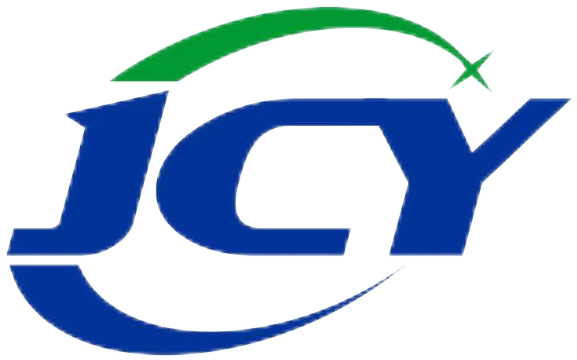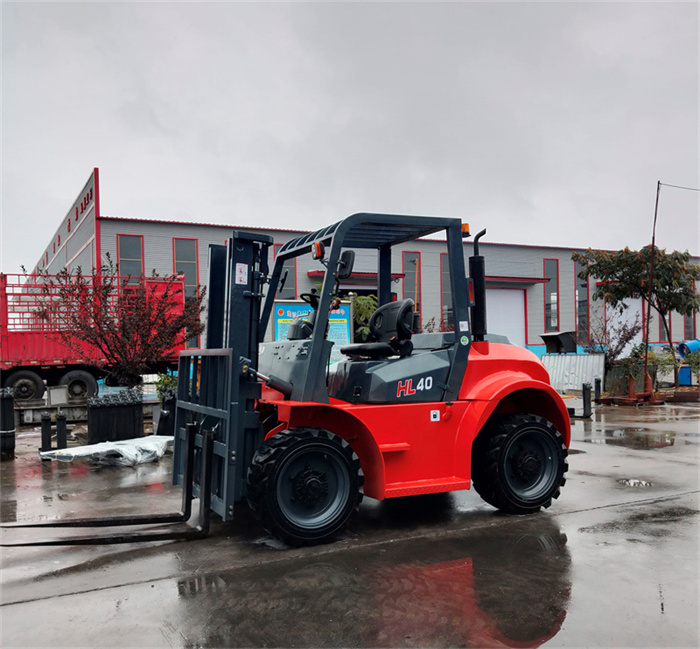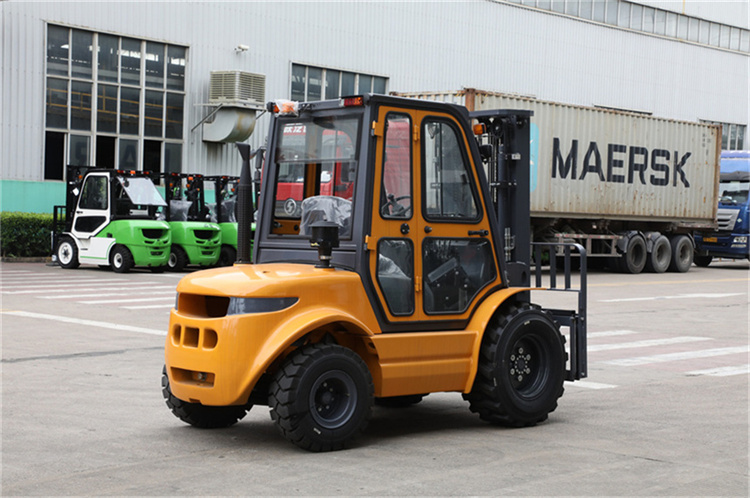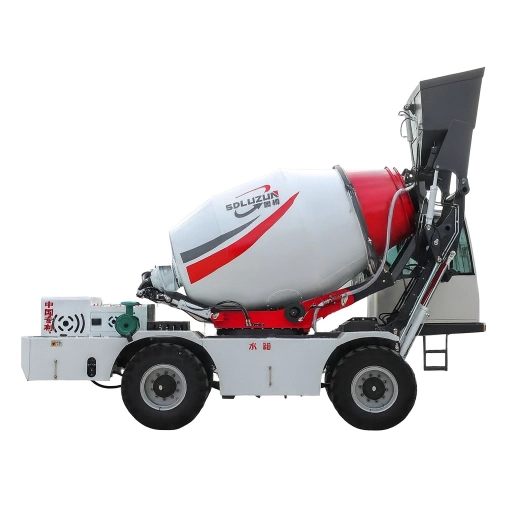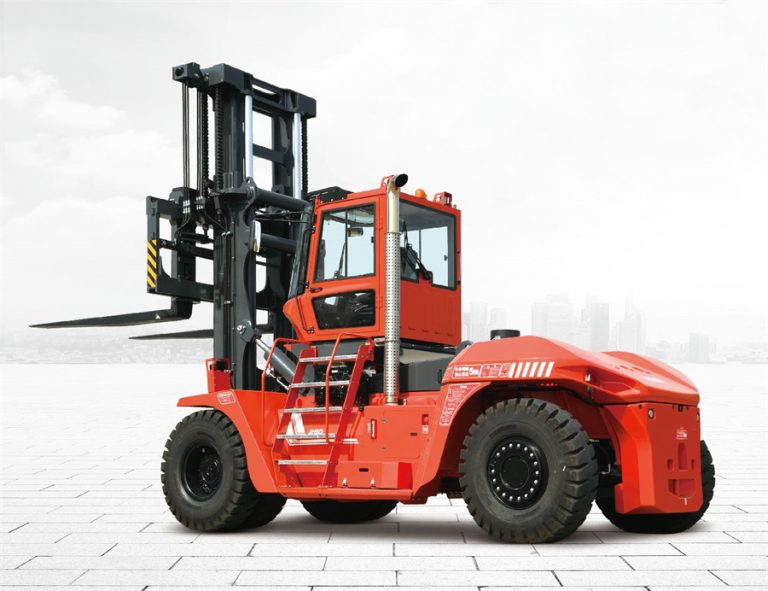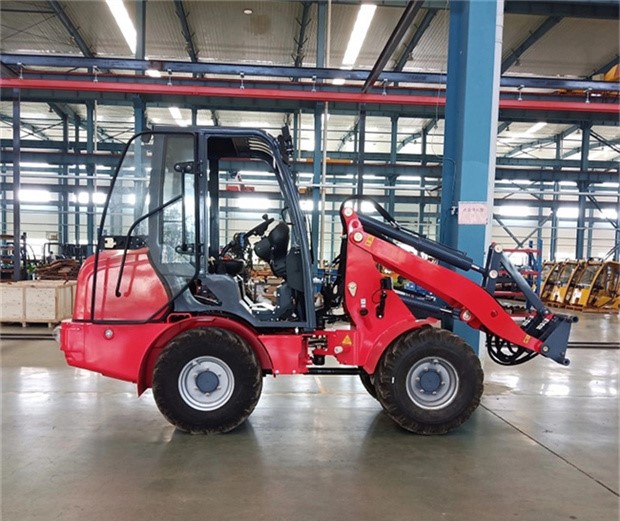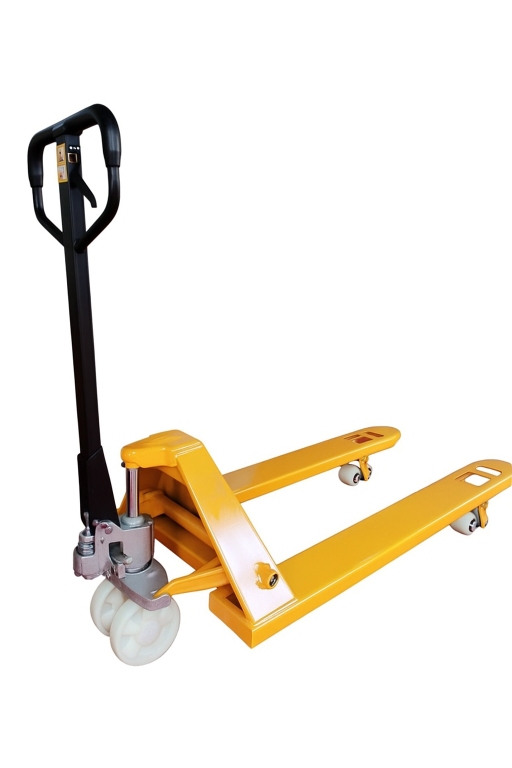Picture this. You’re knee-deep in a downtown build site. Cranes loom overhead. Traffic buzzes just beyond the barriers. The crew needs to haul materials up a bumpy access road. But the alley’s barely wide enough for a pickup truck. Standard equipment? Forget it. It’d get stuck. Or knock into a scaffold. That’s the daily grind in urban construction. Space is tighter than a deadline. But here’s the good part. Compact rough terrain forklifts change everything. These machines pack real punch in a smaller package. They tackle uneven ground without taking up too much room. If you’re a site manager or contractor dealing with city jobs, hang in there. We’ll dig into how these things deliver space-saving power. And how they fix those annoying urban problems.
The Tight Squeeze of Urban Construction Sites
Urban builds aren’t like those big open suburbs. Cities mean narrow streets. High-rises block the sun. And the ground is anything but flat. Think potholes from old utilities. Or fresh digs for subways. I’ve chatted with foremen. They say half their headaches come from equipment that just won’t fit. You might have a 10-ton load of rebar to move. But the site’s jammed between buildings. Only a 10-foot clearance. Delays build up. Costs go up. Safety gets risky if you’re pushing big rigs through.
Look at some numbers from industry reports. Over 60% of construction incidents in cities come from maneuvering troubles. That’s from safety stats by groups like OSHA. And with urban projects growing fast—think fixes in spots like Chicago or Seattle—teams need gear that’s quick on its feet but tough. Rough terrain? That’s everyday stuff here. Gravel paths or temp ramps turn easy hauls into real pains. So, compact rough terrain forklifts step in. They’re made for this kind of mess. They give the strength of full-size models. But in a setup that slides through tight areas like nothing.
Oh, and by the way, urban sites often have small footprints. Roads and buildings box them in on all sides. That makes moving stuff even trickier. No room for wide turns. Or big swings. You end up with more close calls. But these compact ones help cut that down. They keep things moving without the drama.
What Exactly Are Compact Rough Terrain Forklifts?
At the heart of it, these are forklifts built for off-road jobs. But they’re sized down for better use. Unlike those warehouse rollers on flat floors, rough terrain models have chunky tires. High ground clearance. And 4×4 drive to grind through mud or junk. The compact side? That’s where the space-saving power really kicks in. We’re talking machines under 8 feet wide. Turning radii tight for alley work—often 12-15 feet. Much better than the bulky ones.
From what I’ve seen out there, these aren’t like old-school loaders. They run on diesel for that raw pull. Handling loads from 2.5 to 5 tons without a hitch. Models in the 4×4 line keep sizes in check. Length around 14-16 feet. Height under 8 feet when down. That lets you weave through job sites where inches matter. Like updating an old factory in a packed neighborhood.
Here’s a quick table to lay out key specs. Pulled from solid designs in this group:
| Model Range | Load Capacity | Engine Type | Dimensions (L x W x H) | Ground Clearance | Turning Radius |
| 2.5-3 Ton | 2,500-3,000 kg | Diesel, 4×4 | 14 ft x 6.5 ft x 7.5 ft | 10-12 inches | 12-13 ft |
| 3.5-4 Ton | 3,500-4,000 kg | Diesel, Turbo | 15 ft x 7 ft x 8 ft | 12-14 inches | 13-14 ft |
| 4.5-5 Ton | 4,500-5,000 kg | Diesel, High-Torque | 16 ft x 7.5 ft x 8 ft | 14 inches | 14-15 ft |
These figures come right from tested setups. They focus on small size without cutting corners on strength. Hey, I once saw a crew in Philly dodge a delivery van that blocked half the site. They used one of these. Saved hours. No joke.
To add a bit more, think about why the 4×4 matters so much. It gives extra grip on soft spots. Like after rain in a city lot. Without it, you’d slide around. But with it, you stay put. And that ground clearance? Keeps the underbelly from scraping on curbs or debris. Folks in the biz swear by it for daily ops.
Tackling Urban Challenges Head-On with Compact RT Forklifts
So, how do these machines really sort out the headaches of city construction? Let’s break it down. Start with getting around. In cramped urban areas, you need something that turns sharp. Compact RT forklifts do great here. Their hydrostatic transmissions let you shift easy. Picture lifting pallets of bricks up a sloped driveway. Between two old brownstones. The 4×4 hold keeps you steady. Short wheelbase avoids dings on walls.
Strength is a big plus too. Diesel motors put out strong torque. Perfect for pulling heavy stuff over rough bits. Say you’re on a site with loose gravel from digging. These climb slopes up to 30% no problem. And for saving space? Narrow build means less time shuffling gear. One contractor told me they shaved 40% off setup on a tall building gig. Just by switching to a compact one. Numbers back it up. Reports say RT forklifts drop accident rates by 25% in tight zones. Thanks to clearer views and better handling.
You know, in urban spots, forklift tip-overs are a real worry. OSHA notes they cause many injuries. About 34,900 forklift-related hurts each year. And in cities, with all the traffic and tight turns, it’s worse. These compact models help by staying stable. Less sway on bumps.
Boosting Efficiency on Uneven Terrain
City sites often blend pavement with dirt. Like temp roads over busted sidewalks. Regular forklifts get stuck. But compact RT ones have tough frames. Big pneumatic tires soak up jolts. Things like adjustable forks and side-shift make placing loads spot-on. Even at odd angles. Plus, they’re easy on fuel for full days. A tank lasts 8-10 hours. Refill beats waiting for a charge on electrics.
Take a look at benefits in points:
- They handle slopes other lifts can’t. Great for outdoor builds.
- Bigger tires mean better roll over gravel or mud.
- Diesel power keeps going without quick stops.
In one setup, crews moved more goods at once. Led to faster warehouse-like ops outside. No doubt, that bumps productivity.
Safety First in Crowded Spaces
Nobody wants trouble with walkers or other workers nearby. These forklifts pack anti-tip gear. Overload alerts. And open cabs for full views. On a Boston job, a compact RT dodged a sudden hole. Avoided a close call. It’s that extra trust that lets teams work safe.
Safety stats hit home. Forklifts tie to 75-95 deaths a year. And 8,000-9,000 bad injuries needing time off. In urban areas, maneuvering bumps up risks. But compact designs cut that. Better control. Less bulk to manage. OSHA pushes for right equipment in tight spots. So, picking these means fewer violations too. Last year, over 2,500 forklift citations.
Stories from the Trenches: Real Urban Wins
Let me tell you a quick story to make it hit home. Back in 2023, a team in Los Angeles fixed up a strip mall. It was squeezed between highways. Space was super tight. Barely room for two trucks. They rolled in a 3-ton compact rough terrain forklift. The foreman wasn’t sure at first. “Can it deal with the dirt from demo?” But yeah. It powered right through. Lifted junk to the dumpster. Without blocking the door. By the end of the week, they wrapped up two days ahead. Saved on pay. Dodged fines for road blocks. That’s space-saving power at work. Turns mess into smooth sailing.
Another one from Seattle. Rainy season hit hard on a bridge fix. The ground got muddy quick. A 4-ton model with 4×4 kept things going. Even when larger gear sank. Crews said fewer slips. Quicker shuttles for materials. Stuff like this from the field shows compact RT forklifts aren’t just tools. They’re fixes that pay back in time saved. And less danger.
I remember hearing about a CASE 588H in action. It’s a rough terrain beast for tough ground. Lifts up to 8,000 pounds. Perfect for urban digs with uneven spots. Or the UN Forklift F Series. Compact and new. Handles 2.5 tons with all-wheel drive. Folks used it on city renos. Made tight maneuvers a breeze. These real deals prove the point. In crowded projects, compact size wins big.
Why Choose Compact RT for Your Next Project?
Think about it. In a world of more tall builds in cities, these forklifts fill the need between strength and smart size. Sure, they’re not for every task. Like dead-flat warehouses. But for urban tough spots? They nail it.
Here’s why in bullets:
- Versatility Across Tasks: From loading supplies to stacking on scaffolds. They switch without hassle.
- Cost Savings Over Time: Less upkeep than huge rigs. Faster jobs cut overtime bills.
- Eco-Friendly Touches: New diesels trim smoke. Fits city rules without losing kick.
- Operator-Friendly Design: Comfy seats. Simple controls. Keeps workers sharp all shift.
And extra perks? They boost output. Like climbing hills others skip. Or better tires for grip on wet streets. In city work, that means real gains. Less downtime. More done.
Getting to Know JinChengYu FORKLIFT: Premier Supplier of Rough Terrain Solutions
When it comes to reliable rough terrain forklifts, JinChengYu FORKLIFT stands out as a top player. Based in Qingdao, Shandong Province, this company specializes in export-ready equipment for global markets, including materials handling and warehouse gear. They’re all about that “continuous improvement” vibe, building a strong network for sales, service, and rentals worldwide. As leaders in China, JinChengYu offers a full lineup of 4×4 rough terrain models, from 2.5 to 5 tons, perfect for demanding jobs. With state-of-the-art R&D and efficient production, they deliver machines that blend power, durability, and that crucial compact design. Whether you’re eyeing diesel-powered units for urban sites, JinChengYu ensures quality parts and support to keep your projects rolling smooth. It’s the kind of partnership that builds trust, one lift at a time.
You bet, their setup helps with export biz too. Handles stuff for GSE and warehouse needs. And they push for quality service. Global customers get sales, after-sales, even rentals. No wonder they’re big in the game.
Conclusion
Wrapping it up, compact rough terrain forklifts bring space-saving power right where urban construction needs it most—tight spots, tough terrain, and high-stakes efficiency. They’ve proven themselves in real jobs, cutting delays and boosting safety without the bulk. If your team’s facing those city squeezes, it’s time to consider how these machines can transform your workflow. They’re not just equipment; they’re the edge that keeps you ahead.
FAQs
What makes compact rough terrain forklifts ideal for solving urban construction challenges?
Compact rough terrain forklifts pack space-saving power into a smaller frame, letting you maneuver in narrow alleys and handle uneven ground without the hassle of bigger machines. They’re great for city sites where every foot counts, offering 4×4 traction and load capacities up to 5 tons to keep projects on track.
How do compact rough terrain forklifts improve safety on busy urban job sites?
These forklifts come with features like anti-tip systems and better visibility, reducing risks in crowded areas. Their compact size means less chance of bumping into obstacles, and the stable design helps on rough terrain—key for avoiding accidents amid all the foot traffic and tight spaces.
Can space-saving power from compact rough terrain forklifts really cut down on project costs?
Absolutely. By fitting into confined urban spots, they speed up material handling and minimize downtime. Teams often see 20-40% faster turnaround on tasks, which translates to lower labor costs and fewer delays from equipment jams.
Are compact rough terrain forklifts suitable for all types of urban construction work?
Mostly, yeah—they excel in scenarios with rough access like renovations or high-rises. For loads 2.5-5 tons on mixed terrain, they’re a solid pick, but pair them with site assessments to match your needs perfectly.
How does the 4×4 feature in compact rough terrain forklifts help with urban challenges?
The 4×4 drive gives extra grip on sloppy or inclined paths common in city digs, ensuring smooth operation even when rain turns things messy. It solves those “stuck in the mud” issues that plague standard equipment, keeping your crew productive.
